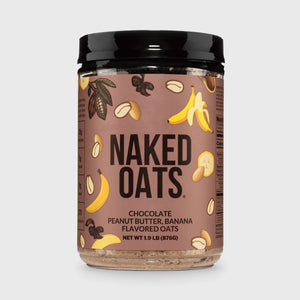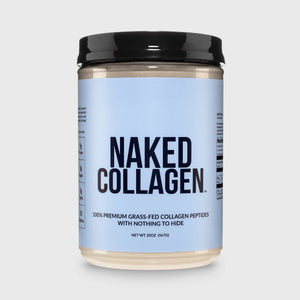With summer around the corner, beach season is upon us. This means it’s time to start paying attention to our diet, because everyone wants to feel confident in a bathing suit.
If you’re looking to lose weight this summer season, don’t fall victim to under-eating.
A calorie deficit is required for weight loss however, many people take to extremes when it comes to cutting calories.
Eating too little can have a major impact on your health and ability to lose weight and keep it off.
How Much Food is Too Little for Me?
It can be tough to know how much we should be eating. Calorie needs vary from individual and are based on factors such as height, weight, age, gender, and activity level.
It is recommended that women consume somewhere around 2,000 calories per day while men should be closer to 2,500.
If you are hoping for more specific guidelines, you can utilize various online resources, such as a Total Daily Energy Expenditure (TDEE) calculator.
Tools such as this can help provide a more personalized range. The number generated from these types of tools is the number of calories required to maintain your current weight.
If you are looking to lose weight you need to be consuming less than this however, you don’t want to exceed a 500 calorie deficit daily.
This means if you are consuming 2,000 calories to maintain your current weight, you should be eating at least 1,500 calories per day for weight loss.
The goal is to burn more calories than your body is consuming but also feel satisfied during meals.
If you are trying to achieve a 500-calorie deficit daily but you are still feeling very hungry, it’s time to reassess.
It’s also important to take into consideration your goals. Are you looking to lose fat, build muscle, or both?
These will make a difference when it comes to what and how much you eat.
For example, if you are trying to build muscle tone to look good in that bathing suit, you need to eat enough, especially of protein foods, to be able to support muscle growth.
What Happens if I Eat Too Little?

Although it can be tempting to cut down calories to the bare minimum in the name of weight loss, especially if you have an event coming up and you want it gone quickly, chances are you won’t get the results you were hoping for.
When we are younger, very low-calorie diets may work like a charm initially. However, once we get older and we continue to cycle through low-calorie diets our body will stop responding the way it used to.
If you do drop weight, you will likely find that you are losing muscle mass. You may not be able to lose significant amounts of weight because your metabolism begins to slow down when it’s not getting enough calories to support daily functions [1].
Once you end the restriction on calories, you will more than likely regain the weight you lost and then some.
When you lose muscle mass during weight loss, you may notice feeling weak and having difficulty seeing progress or getting through your workouts. It can severely impact your energy levels and your overall mood.
Additionally, cycling through overly restrictive, low-calorie diets on repeat for many years can have long-term health consequences and can even spark binge-eating behaviors in some individuals.
When we are consuming low amounts of food, we are not able to get in the nutrients our body needs which can lead to deficiencies.
Very low calorie diets (800 calories or less) and rapid weight loss can also cause conditions such as gallstones, which may require surgery [1].
How to Make Sure I'm Eating Enough?

A good way to determine if you are eating enough or not is to consider how you are feeling.
Do you have low energy levels? Are you constantly feeling hungry? Are you irritable?
If so, chances are you aren’t eating enough.
Although many feel these symptoms come with the territory, it’s not normal or sustainable to feel this way. This is your body letting you know you need more food.
To avoid nutritional deficiencies and encourage healthy weight loss, it is recommended that women do not consume less than 1,200 calories per day and men do not consume less than 1,500 calories per day [2].
If you need additional guidance with weight loss, consider working with a Registered Dietitian Nutritionist.
What About Macros?

Tracking macros has become a very popular tool for many looking to lose weight. However, it can be a little overwhelming and a lot of people don’t know what exactly they should be aiming for.
The average person should be consuming 45-65% of their calories from carbohydrates, 10-35% of their calories from protein, and 20-35% of their calories from fat.
When you are trying to lose weight, be sure to pay close attention to your protein intake [3].
Protein is the most satiating nutrient and numerous studies have found that higher protein diets can help with weight loss.
This means for those counting macronutrients, aiming for the higher range might provide assistance in weight loss and satiety [4].
Additionally, fiber should also be emphasized.
Fiber can assist with satiety and a high-fiber diet can help with maintaining a healthy weight, specifically soluble fiber.
Rich sources of soluble fiber include beans, legumes, whole grains, and avocados [5].
How to Track Calories and Macros?
If you are interested in tracking your calorie or macronutrient intake, consider using an app such as MyFitnessPal or LoseIt.
These apps can make it easy for you to see what and how much you are eating throughout the day. Some even have the option to scan your foods to enter them quickly.
If apps are not your thing, you can take a more traditional route and write your foods down by hand or invest in a food journal.
Although these can be just as effective, they are typically more time-consuming and involve doing more math and label reading versus an app that can do this for you.
Tips to Track Nutrition on a Busy Schedule

If you want to track your calories and macros but have a very busy schedule, consider tracking ahead.
This can help you plan out your day before it even gets started while also allowing you to tweak your meals and snacks to stay on top of your calorie, protein, and fiber goals.
For example, if you normally have eggs and bacon for breakfast but might have a salad or a sandwich for lunch, plug those into your app or write them down the night before or the morning so you can see where this will put you in terms of your ranges.
If you input all your foods for the day and you haven’t met your protein goal, you have an opportunity to swap out a meal or snack for something that has more protein before the day is over.
Final Thoughts
When it comes to dieting, many make the mistake of under-eating. Unfortunately, this can wreak havoc on your health and your goals.
It’s important to make sure to fuel your body correctly to ensure healthy and sustainable weight loss.
If you aren’t sure how much you should be eating, consider utilizing a TDEE app or consulting with a Registered Dietitian Nutritionist.













